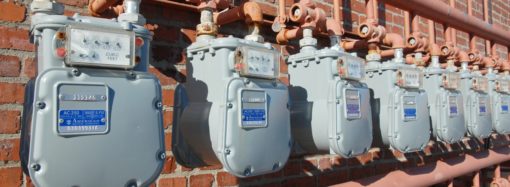I travelled to Denver twice in the last 7 days to testify before the Senate State Affairs Committee on HB 1291, Colorado’s State Implementation Plan to meet the Regional Haze provision of the federal Clean Air Act.
I told the Committee that HB 1291 is illegal. And I rebutted the distortions peddled by its proponents, who also testified. Illegality and disingenuousness are huge accusations, and I made them twice, in testimonies a week apart, so the bill’s proponents had time to conjure a response. But no one disputed my assertions. Because they were true.
Nonetheless, the Plan passed out of Committee, due to the fact that it enjoys the support of two of Colorado’s richest special interests, for which billions of dollars were at stake. Today, HB 1291 was enacted by the full Senate, by a 25-10 vote. Two weeks ago, by a 58-7 vote, it was passed by the House of Representatives. If there’s one thing a bipartisan, bicameral majority can agree on these days, it’s the importance of currying favor with the deepest pockets.
This is a long blog about the who, what, why, and when of Colorado’s Regional Haze State Implementation Plan, the most outrageous rip-off you’ve never heard of.
The Back Story
Colorado’s Regional Haze State Implementation Plan originated not in the Centennial State, but in Oklahoma. It owes its form to Aubrey McClendon, CEO of Chesapeake Energy, a natural gas company headquartered in Oklahoma City.
McClendon is very open about his pursuit of government policies that make people use more of the product he produces. Among the many pro-gas, anti-market policies he supports, are: forcing cars to use gas; blocking the construction of coal plants; and advocating for climate change policies to spur fuel switching from coal to gas for electricity generation.
It was the latter pitch he made to former Colorado Governor Bill Ritter. Ritter aggressively advertised himself as an environmentalist energy policymaker, so he was the perfect mark for McClendon. In July 2009, gas industry representatives, led by Chesapeake Energy, gave a presentation to Governor Ritter explaining how fuel switching from coal to natural gas was the only way that the Governor could reach his greenhouse gas emissions reduction goals established by his “Colorado Climate Action Plan.”
When the gas industry put together its power point presentation for Governor Ritter, a cap-and-trade scheme was making its way through the House of Representatives, and “doing something” about climate change seemed to be politically viable. It wasn’t. The House enacted cap-and-trade legislation in June, just before the July recess. For the rest of the summer, the big political story was the overwhelming public anger directed at sitting Members of Congress during so-called “town hall” meetings. And, in many jurisdictions, the anger was driven in large part by the House’s passage of an energy rationing scheme.
Clearly, “doing something” about climate change was politically dangerous. The upshot is that the Ritter and McClendon needed a better reason for fuel switching if they were going to sell it successfully to Colorado voters.
So they tacked. Instead of climate change, they changed the impetus for fuel switching from climate change to Big Brother. They claimed that President Obama was waging a war on coal, and that a raft of federal air quality regulations was in the pipeline, and, finally, that the cheapest fashion to comply with this coal crackdown was to switch fuels from coal to natural gas.
To be sure, Obama’s EPA is waging a war on coal (I’ve written about this subject extensively; see here, here, here, and here). However, it is also true that Colorado’s coal powered plants, for the most part, already are equipped with top-of-the-line pollution controls. As such, Colorado’s coal power fleet was well positioned to endure the EPA’s regulatory assault, and remain a source of affordable electricity. That is, fuel switching was an unnecessary and expensive policy to achieve compliance with pending federal air quality regulations.
But the facts didn’t matter, because Ritter wanted his climate kudos and the gas guys wanted fuel switching. To get Xcel Energy (the largest utility in the state) on board, they offered super-generous cost recovery treatment in exchange for participation, including a guaranteed 10.5 percent return on investment and, more importantly, upfront payment (normally, utilities have to wait until an asset is “used and useful” before they can recover costs). In light of the huge capital costs entailed in fuel switching (Xcel gets to recover the cost of the remaining life of the coal plant, the cost of dismantling the plant, and the cost of building new gas plants), Xcel stood to reap at least $130 million in fuel switching profits through 2020.
During the winter of 2009/2010, the “winners” of fuel switching (Xcel, the gas industry, Governor Bill Ritter, and environmentalist non-profits) hammered out the text of a fuel switching bill. The “losers” (the coal industry, ratepayers, and independent power producers) were left out of the negotiations. Indeed, they weren’t even aware of the negotiations until the legislation, ironically titled the “Clean Air Clean Jobs Act,” was finished. The law was enacted in April, 2010.
Perhaps you are wondering: How does this relate to Regional Haze? Well, as I noted above, fuel switching in Colorado was justified as an affordable response to Obama’s war on coal. To be specific, the Clean Air Clean Jobs Act authorized favorable rate treatment for Xcel if the utility met “reasonably foreseeable” federal air quality regulations with a “cost-effective” plan that could include fuel switching. In practice, these “reasonably foreseeable” regulations were defined as Regional Haze and a revised Ozone National Ambient Air Quality Standards, although the former took precedence over the latter. According to Karen Hyde, Xcel Energy’s Vice President for Regulatory Affairs, Regional Haze “precipitated” the Clean Air Clean Jobs Act. As a result, the fuel switching implementation plan was a component of the Regional Haze State Implementation Plan.
[For a primer on the Regional Haze provision of the Clean Air Act, click here.]
Xcel Overreaches
As is explained in this policy paper, the impetus for fuel switching—a federal coal crackdown—was grossly exaggerated. Proponents claimed that there were 11 regulations in the pipeline; in fact, there were two (as noted above, these two regulations were Regional Haze and Ozone). And they could have been met with emissions controls far more cost-effective than tearing down coal plants and building new gas plants. But Colorado lawmakers bought the ruse, or at least they pretended to, and enacted the Clean Air Clean Jobs Act.
It was all well and legal…until the rent seekers made a big mistake. Xcel got greedy. As I noted above, Xcel’s “carrot” to fuel switch was generous cost-recovery treatment, so the utility had a big incentive to cram as much into the fuel switching plan as they could. In this avaricious spirit, Xcel sought to incorporate into the fuel switching plan the cost of controls at plants that were not subject to “reasonably foreseeable” federal air quality requirements, and, therefore, not subject to the Clean Air Clean Jobs Act.
Like other power plants included in the Clean Air Clean Jobs Act plan, the Hayden 1 and 2 coal power plants in Routt County near Steamboat Springs in northern Colorado are subject to Regional Haze regulations. Unlike the other power plants incorporated into the fuel switching plan, Hayden 1 and 2 are not subject to pending Ozone regulations for existing coal fired power plants, because they are not located in Colorado’s ozone non-attainment area. As such, they were not subject to the “reasonably foreseeable” federal air quality regulations stipulated in the Clean Air Clean Jobs Act, and, therefore, should not have been included in the fuel switching plan.
To make matters worse, Xcel could have achieved compliance with Regional Haze for Hayden 1 and 2 with emissions controls that cost roughly $20 million, but it instead pressed for controls that cost $140 million. Its reasoning was simple: The more costs it could cram into the fuel switching plan, the more profit it made. According to the Public Utilities Commission staff, “It…appears that the only reason [Xcel] has included these units [Hayden 1 and 2] in its plan is to be able to receive the special rate recovery treatment provided by the [Clean Air Clean Jobs] Act.”
Xcel’s proposed emissions controls for Hayden 1 and 2 far exceeded what the federal government requires to comply with Regional Haze. That’s a problem, because it is illegal in Colorado for a state implementation plan pursuant to the Clean Air Act (like the Regional Haze State Implementation Plan) to include emissions controls that are more stringent than what the federal government requires. To paraphrase the General Assembly’s Legislative Council, the federal “floor” for emissions controls is the state “ceiling.” As I explain in detail here, Xcel’s proposed Regional Haze controls for Hayden 1 and 2 clearly violate this statutory prohibition, and are therefore illegal.
Despite this conspicuous contradiction with Colorado statute, on November 18, 2010, the Colorado Air Quality Control Commission approved Xcel’s ultra-expensive emissions controls at Hayden 1 and 2 as part of the Regional Haze State Implementation Plan. Notably (or disconcertingly), the legality of the controls was never addressed during the Air Quality Control Commission’s deliberations.
On December 9, 2010, the Public Utilities Commission approved these Hayden controls as part of the Clean Air Clean Jobs Act implementation plan. It then sent this plan to the Air Quality Control Commission for incorporation into the final Regional Haze State Implementation Plan. On January 11, 2011, the Air Quality Control Commission approved the Regional Haze State Implementation Plan, and submitted it to the General Assembly for final approval.
Battle in the General Assembly
The Regional Haze State Implementation Plan was introduced as HB 1291, and it quickly passed the House of Representatives by a 58-7 vote. The vote was overwhelming because the legislation was the number one priority of two of Colorado’s most influential special interests. In effect, HB 1291 was the final step of the Clean Air Clean Jobs Act, so a lot was on the line, and its proponents pressed as hard as they could. The “magnificent” seven lawmakers who voted against HB 1291 deserve a lot of credit for political courage.
The wonderfully principled State Senator Kevin Lundberg also deserves much credit for standing up to Colorado’s biggest special interests. He was outraged by the evident illegality and cost-ineffectiveness of the Regional Haze State Implementation Plan, and he sponsored legislation that would strip it of the Hayden 1 and 2 emissions controls. That legislation was S 237.
And this point, things got a little scandalous. On April 11, the Senate referred HB 1291 and S 237 to the State Affairs Committee, and a hearing on both bills was scheduled for April 25. Despite the fact that HB 1291 enjoyed the support of Colorado’s most influential special interests (gas and Excel) and was therefore almost assuredly going to pass by a wide margin, its proponents decided to leave nothing to chance. On April 12, the State, Veterans, and Military Affairs Committee moved the hearing on HB 1291 up to April 19, but it left consideration of S 237 on April 25. But if the Senate approves the Regional Haze State Implementation Plan by enacting HB 1291 on April 19, then there is no reason to consider changes to that Plan (i.e., S 237) a week later. Senate leadership was trying to silence the opposition!
Senator Lundberg fought these shenanigans, and managed to delay a final vote on HB 1291 until S 237 could be considered. At the Senator’s request, I testified at both the April 19 hearing (on HB 1291) and the April 25 hearing (on S 237), along with Carol Kirkstadt and the Independence Institute’s Amy Oliver Cooke.
Video of my HB 1291 testimony is available here; the S 237 testimony is available here (I start at the 6:00 minute mark, and I have rebuttal testimony at 34:50). They were similar testionies. In each case, I dropped a big matzo ball: I told the Senate State Affairs Committee that the law they were considering is an illegal rip off.
To be sure, that’s a big accusation, one that I don’t make lightly. An Attorney General representative testified at both hearings. So did an Air Quality Control Commission rep. So did Xcel’s VP for Regulatory Affairs and its top environmental officer. So did a Chesapeake Energy attorney representing the gas industry. Surely, if my reasoning was flawed, then they would have corrected it, right? No one rebutted my arguments.
Instead, I rebutted theirs.
All of the fuel switching proponents claimed that the EPA would usurp Colorado’s air quality planning if HB 1291 wasn’t enacted untouched. As I told the Committee, this is the same bogus Big Brother reasoning that galvanized the Clean Air Clean Jobs Act. It was wrong then, and it’s wrong now. If the Hayden controls were stripped from the State Implementation Plan, then Colorado would submit a “conditional” plan (i.e., one without the Hayden 1 and 2 controls), while the Hayden 1 and 2 Regional Haze determinations would be remanded to the Air Quality Control Commission. Thus would begin a process of negotiation. In all likelihood, the Environmental Protection Agency would accept the “conditional” Regional Haze State Implementation Plan (after all, it calls for total emissions reductions far in excess of what is required, due to the incorporation of the fuel switching plan), and then wait to consider the Hayden 1 and 2 emissions controls. The idea that the EPA would swoop in overnight and start kicking ass and taking names simply does not comport with the reality of environmental federalism in the US. As I noted in the hearings, it is akin to saying that the bank will foreclose on your home because you missed a credit card payment.
The gas industry counsel and the Attorney General representative both intimated that Hayden 1 and 2 were subject to the Clean Air Clean Jobs Act, and, therefore, exempt from Colorado’s statutory prohibition on emissions controls pursuant to the Clean Air Act that exceed federal requirements. This was a misrepresentation, and I told that to the Committee. As I explain above, the Hayden 1 and 2 power plants are not in Colorado’s ozone non-attainment zone, so they are not subject to the more stringent ozone regulations under consideration by the Obama administration. As such, they are not subject to the Clean Air Clean Jobs Act. Undoubtedly, the lawyers were aware of this fact, which means they were being disingenuous.
Xcel’s top environmental officer actually told the Committee that the EPA, in disapproving Colorado’s 2008 Regional Haze State Implementation Plan, had “closed the door” on anything but the most expensive emissions controls at Hayden 1 and 2, the ones Xcel had chosen. This was a lie, as I told the Senate in rebuttal testimony. I backed this assertion by providing to the Committee the EPA’s disapproval letter, which I had brought with me. In fact, the rejection was due primarily to a procedural matter (the Air Quality Control Commission had failed to identify all technologically feasible emissions controls, as is required by the Regional Haze provision of the Clean Air Act), and had nothing to do with the Hayden 1 and 2 controls.
Thus, I presented a case that HB 1291 was almost assuredly illegal, and I also exposed the pack of distortions that served as the legislation’s justification. Of course, the ugly truth stood no chance vis a vis the promise of campaign lucre from rent seekers. By a 3 to 2 vote, the State Affairs Committee passed HB 1291 and rejected S 237.
So what is next? In the immediate future, HB 1291 will be sent to the Governor for his signature. There’s no reason to expect that Governor Hickenlooper won’t approve the legislation. But it’s not necessarily over after that. HB 1291 almost certainly violates existing Colorado statute, but this matter was never vetted by regulatory agencies or the General Assembly. As such, the law is ripe for legal challenge from Xcel ratepayers.
William Yeatman is an energy policy analyst at the Competitive Enterprise Institute







